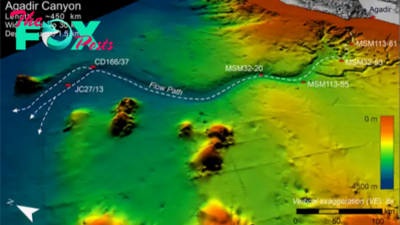Science
Gravitational waves hint at a 'supercool' secret about the Big Bang
In 2023, physicists were awed to find nearly imperceptible ripples in the fabric of space and time — united as an entity known as spacetime. They were ripples discovered in association with collections of rapidly spinning neutron stars called "pulsar timing arrays."
This low-frequency background hum of gravitational waves in our universe was originally attributed to a change, or a "phase transition," that occurred shortly after the Big Bang. New research, however, casts doubt on that assumption.
"Theorists and experimentalists have speculated nanohertz gravitational waves originated from a known transition that happened very soon after the Big Bang — a change that generated the masses of all the known fundamental particles," Andrew Fowlie, an assistant professor at Xi'an Jiaotong-Liverpool University, said in a statement. "However, our work uncovers serious problems with that otherwise appealing explanation of their origin."
Phase transitions are sudden changes in a substance's properties, and they typically occur when a particular substance reaches a critical temperature. The phase transition perhaps most familiar to us is the transition of water into ice as temperatures fall below freezing. There are also what are known as "supercool" transitions. With water, a supercool transition occurs when the substance gets "stuck" in its liquid phase, slowing its transformation into ice.
Related: The 1st life in the universe could have formed seconds after the Big Bang
Many scientists believe a "first-order phase transition" occurred at the very beginning of time, triggering the launch of gravitational waves, or ripples in space-time. Those waves, experts think, could therefore be used to determine conditions present during the first epoch of rapid iNFLation in our universe, or maybe even the conditions present before the Big Bang.
Just a phase?
The concept of gravitational waves dates back to Albert Einstein's 1915 theory of gravity called "general relativity." The great physicist's magnum opus theory predicts that objects with mass have a warping effect on the very fabric of spacetime . Our physical experience of gravity, the theory states, arises from this warping.
-

 Science1d ago
Science1d agoAl Naslaa rock: Saudi Arabia's enigmatic sandstone block that's split perfectly down the middle
-

 Science1d ago
Science1d agoSpaceX Falcon 9 rocket grounded for 2nd time in 2 months following explosive landing failure
-

 Science1d ago
Science1d agoJames Webb telescope spots 6 enormous 'rogue planets' tumbling through space without a star
-

 Science2d ago
Science2d agoAncient viral genomes plucked from glaciers reveal how pathogens have adapted to Earth's shifting climate
-

 Science2d ago
Science2d agoLarge patch of the Atlantic Ocean near the equator has been cooling at record speeds — and scientists can't figure out why
-

 Science3d ago
Science3d ago200 meteorites on Earth traced to 5 craters on Mars
-

 Science3d ago
Science3d agoScientists collect high-resolution images of the North Star's surface for 1st time
-

 Science3d ago
Science3d agoSupercharged 'cocoon of energy' may power the brightest supernovas in the universe


























